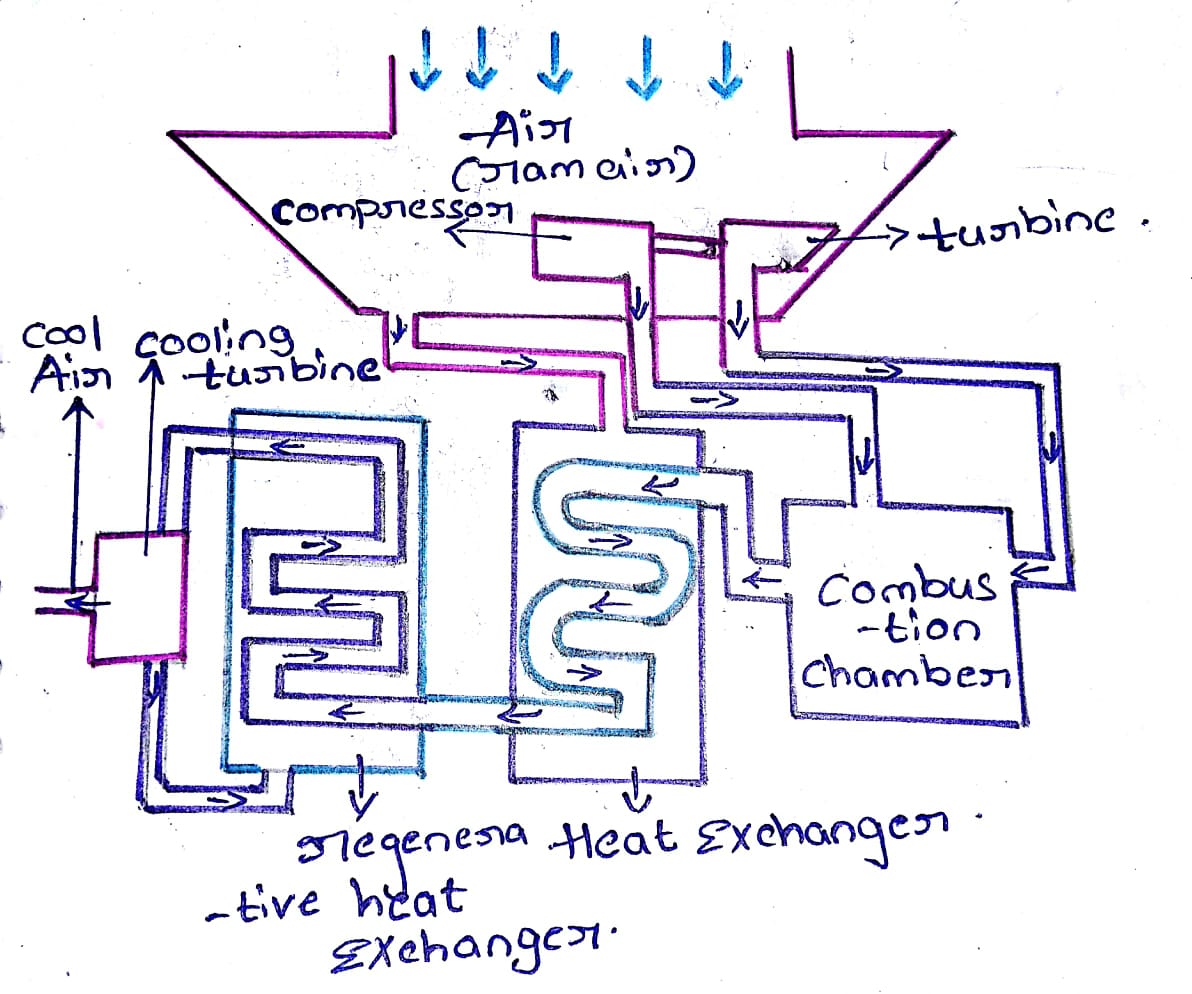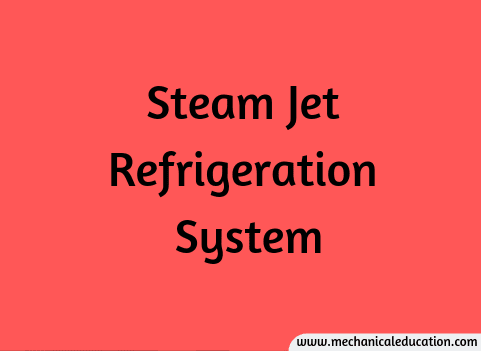What is Thermostatic Expansion Valve?
A Thermostatic Expansion Valve (TXV) is a type of refrigeration and air conditioning valve that regulates the flow of refrigerant into the evaporator coil based on temperature sensing. It is a crucial component in the refrigeration cycle, controlling the amount of liquid refrigerant entering the evaporator to maintain optimal system performance.
Key features and components of a Thermostatic Expansion Valve include:
- Sensing Bulb:
- The TXV has a sensing bulb, usually filled with a temperature-sensitive refrigerant, that is attached to the suction line or the outlet of the evaporator coil. The sensing bulb detects the temperature of the refrigerant leaving the evaporator.
- Adjustable Valve Opening:
- The TXV has an adjustable valve opening that controls the flow of refrigerant into the evaporator. The opening is adjusted based on the temperature feedback from the sensing bulb.
- Diaphragm or Bellows:
- The sensing bulb is connected to a diaphragm or bellows inside the valve. As the temperature changes, the refrigerant in the sensing bulb expands or contracts, causing the diaphragm to move.
- Spring:
- Many TXVs include a spring that counteracts the movement of the diaphragm. The spring helps maintain stability and provides resistance against the pressure exerted by the refrigerant in the sensing bulb.
- Valve Seat and Orifice:
- The TXV has a valve seat and an orifice through which the refrigerant flows. The valve seat and orifice regulate the rate at which refrigerant enters the evaporator.
- External Equalizer (Optional):
- Some TXVs include an external equalizer tube that connects the low-pressure side of the system to the diaphragm chamber. This equalizer tube helps balance pressures and ensures accurate valve operation.
The working principle of a Thermostatic Expansion Valve involves the dynamic adjustment of the valve opening based on temperature changes. Here’s a simplified explanation:
- Temperature Sensing:
- The sensing bulb detects the temperature of the refrigerant leaving the evaporator coil.
- Diaphragm Movement:
- As the temperature changes, the refrigerant in the sensing bulb expands or contracts, causing the diaphragm to move.
- Valve Adjustment:
- The movement of the diaphragm adjusts the valve opening. If the temperature rises, indicating a higher heat load, the valve opens to allow more refrigerant into the evaporator. If the temperature drops, the valve closes to reduce the refrigerant flow.
- Maintaining Optimal Superheat:
- The goal is to maintain a specific superheat in the evaporator. Superheat is the temperature difference between the refrigerant vapor and its saturation temperature. By adjusting the refrigerant flow, the TXV ensures that the evaporator operates with optimal superheat.
Thermostatic Expansion Valves are widely used in air conditioning and refrigeration systems due to their ability to provide precise control over the refrigerant flow based on real-time temperature feedback. They contribute to efficient heat transfer and prevent issues like flooding or starving of the evaporator.
How do Thermostatic Expansion Valve Work?
The working of a Thermostatic Expansion Valve (TXV) involves dynamic control of refrigerant flow into the evaporator based on real-time temperature feedback. The primary objective is to maintain optimal superheat, which is crucial for efficient heat absorption in the evaporator coil. Here’s a step-by-step explanation of how a TXV works:
- Temperature Sensing:
- The TXV incorporates a sensing bulb filled with a temperature-sensitive refrigerant. This sensing bulb is attached to the suction line or the outlet of the evaporator coil. Its purpose is to continuously sense the temperature of the refrigerant leaving the evaporator.
- Pressure Changes in Sensing Bulb:
- As the temperature of the refrigerant changes, the refrigerant in the sensing bulb expands or contracts, causing pressure changes within the bulb. This pressure change is directly proportional to the temperature change.
- Diaphragm or Bellows Movement:
- The pressure changes in the sensing bulb are transmitted to a diaphragm or bellows inside the TXV. The diaphragm is a flexible membrane that moves in response to these pressure changes.
- Adjustable Valve Opening:
- The movement of the diaphragm is connected to an adjustable valve opening mechanism. As the diaphragm moves, it adjusts the size of the valve opening. This adjustment controls the flow of refrigerant into the evaporator.
- Maintaining Optimal Superheat:
- The primary goal of the TXV is to maintain a specific superheat in the evaporator. Superheat is the temperature rise of the refrigerant vapor above its saturation temperature. By adjusting the valve opening based on temperature feedback, the TXV ensures that the evaporator operates with optimal superheat.
- Dynamic Flow Regulation:
- The TXV continuously and dynamically regulates the flow of refrigerant into the evaporator based on real-time temperature feedback. This dynamic adjustment allows the valve to adapt to changes in heat load, ambient conditions, and other factors.
- Balancing Pressures (Optional):
- Some TXVs include an external equalizer tube that connects the low-pressure side of the system to the diaphragm chamber. This tube helps balance pressures and ensures that the diaphragm responds accurately to changes in evaporator conditions.
- Efficient Heat Absorption:
- By maintaining optimal superheat and regulating refrigerant flow, the TXV ensures efficient heat absorption in the evaporator. This is essential for effective cooling performance.
The continuous adjustment of the expansion valve based on temperature feedback ensures that the refrigeration or air conditioning system operates efficiently under varying conditions. The TXV’s ability to provide precise control over refrigerant flow contributes to improved system performance and prevents issues like flooded evaporators or insufficient heat absorption.
Thermostatic Expansion Valve Advantages and Disadvantages
Advantages of Thermostatic Expansion Valve (TXV):
- Precise Control:
- TXVs offer precise control over the refrigerant flow into the evaporator, helping to maintain optimal superheat and ensuring efficient heat absorption.
- Adaptability to Variable Conditions:
- TXVs dynamically adjust to changes in heat load, ambient temperature, and other operating conditions, making them adaptable to variable system requirements.
- Prevention of Flooded Evaporator:
- TXVs help prevent the evaporator from being flooded with excess liquid refrigerant, which can lead to reduced efficiency and potential compressor damage.
- Efficient Heat Absorption:
- By maintaining optimal superheat, TXVs contribute to efficient heat absorption in the evaporator, enhancing overall system efficiency.
- Suitability for Various Refrigerants:
- TXVs are designed to work with a variety of refrigerants, providing flexibility in system design and compatibility.
- External Equalizer for Accuracy (Optional):
- The option to include an external equalizer tube helps balance pressures, ensuring accurate valve operation under different conditions.
- Effective in Air Conditioning Systems:
- TXVs are commonly used in air conditioning systems where precise control over refrigerant flow is crucial for maintaining comfort and efficiency.
- Reduced Risk of Liquid Slugging:
- The precise control offered by TXVs reduces the risk of liquid refrigerant entering the compressor, preventing issues like liquid slugging and associated compressor damage.
Disadvantages of Thermostatic Expansion Valve (TXV):
- Complex Design:
- The design of TXVs can be relatively complex compared to simpler expansion devices, making them more intricate to install and maintain.
- Sensitivity to Contaminants:
- TXVs can be sensitive to contaminants in the refrigerant system, and impurities may affect proper functioning or lead to valve malfunctions.
- Initial Cost:
- TXVs are generally more expensive than simpler expansion devices, potentially increasing the initial cost of the refrigeration or air conditioning system.
- Power Dependency (Electronic Types):
- Electronic TXVs (ETXVs) require a power supply for their electronic control systems, adding a dependency on electrical power for operation.
- Potential for Electronic Failures (ETXVs):
- In electronic TXVs, electronic components may be susceptible to failure, which can impact the valve’s ability to regulate refrigerant flow accurately.
- Maintenance Complexity:
- Maintenance and repairs of TXVs, especially electronic versions, may require specialized knowledge and tools, potentially increasing maintenance complexity.
- Limited Precision in Some Applications:
- In certain applications or conditions, TXVs may not provide the same level of precision as manually adjusted valves, which can be a concern in situations requiring extremely precise control.
It’s important to note that the advantages and disadvantages listed here may not apply universally to all Thermostatic Expansion Valves, and specific details can vary based on the type and model of the valve. The selection of the expansion device should be based on the specific requirements of the refrigeration or air conditioning system in question.
Types of Thermostatic Expansion Valve
There are various types of Thermostatic Expansion Valves (TXVs) designed to meet specific requirements in different applications. The most common types include:
- Externally Equalized TXV:
- In this type, the TXV has an external equalizer tube that connects the low-pressure side of the system to the diaphragm chamber. This helps balance pressures and ensures accurate valve operation, particularly in systems with varying evaporator pressures.
- Internally Equalized TXV:
- Unlike externally equalized TXVs, internally equalized TXVs do not have an external equalizer tube. Instead, they use an internal passage to balance pressures, simplifying the design and installation.
- Bi-Flow TXV:
- Bi-Flow TXVs are designed for heat pump applications where the refrigerant flow direction may change based on whether the system is in heating or cooling mode. They accommodate bidirectional flow.
- Cartridge TXV:
- Cartridge TXVs are compact and designed as a self-contained unit. They offer ease of replacement and installation, making them suitable for specific applications where space is limited.
- Balanced Port TXV:
- Balanced port TXVs are designed to maintain a stable superheat by balancing the refrigerant pressures on both sides of the diaphragm. This design helps improve overall valve stability.
- Thermal Element TXV:
- Thermal element TXVs use a thermal sensing element, such as a bellows or diaphragm filled with a temperature-sensitive fluid, to regulate refrigerant flow based on temperature changes in the evaporator.
- Electronic TXV (ETXV):
- Electronic TXVs (ETXVs) incorporate electronic control systems to regulate refrigerant flow based on electronic feedback rather than a mechanical sensing element. They offer advanced control features and compatibility with electronic systems.
- Heat Pump TXV:
- Heat pump TXVs are specifically designed for heat pump applications, where the refrigerant flow direction and system operation can change between heating and cooling modes.
- Adjustable TXV:
- Some TXVs come with adjustable settings, allowing technicians to fine-tune the valve’s performance based on system requirements and conditions.
- Fixed Orifice TXV:
- Fixed orifice TXVs have a fixed opening size and do not have an adjustable valve opening mechanism. They are designed for specific applications where a fixed refrigerant flow rate is sufficient.
The choice of a specific type of TXV depends on factors such as the application, system requirements, refrigerant used, and the desired level of control. Manufacturers often provide guidelines for selecting the appropriate TXV type based on these factors.
Thermostatic Expansion Valve Applications
Thermostatic Expansion Valves (TXVs) find applications in various refrigeration and air conditioning systems where precise control of refrigerant flow into the evaporator is essential. Their ability to dynamically adjust to changing conditions makes them suitable for a range of applications. Here are some common applications of thermal expansion valves:
- Air Conditioning Systems:
- TXVs are widely used in air conditioning systems for residential, commercial, and industrial applications. They help maintain optimal superheat, ensuring efficient heat absorption in the evaporator and consistent cooling performance.
- Refrigeration Systems:
- In refrigeration systems, TXVs regulate the flow of refrigerant to control the temperature inside refrigerated spaces. They contribute to energy efficiency and prevent issues like flooded evaporators.
- Heat Pumps:
- TXVs are employed in heat pump systems, where they assist in both the heating and cooling modes by controlling the flow of refrigerant based on temperature feedback from the evaporator.
- Commercial Refrigeration:
- Commercial refrigeration systems, including walk-in coolers, display cases, and ice machines, often utilize TXVs to achieve precise temperature control and energy efficiency.
- Chillers:
- Chillers, commonly used in industrial and commercial settings for cooling liquids, may incorporate TXVs to regulate the flow of refrigerant through the evaporator, optimizing heat exchange.
- Automotive Air Conditioning:
- Automotive air conditioning systems use TXVs to control refrigerant flow, ensuring efficient cooling in vehicles. The precise control provided by TXVs contributes to comfort and energy efficiency.
- HVAC Systems:
- Heating, ventilation, and air conditioning (HVAC) systems in buildings often incorporate TXVs for efficient cooling. The valves contribute to maintaining stable conditions and preventing issues like coil icing.
- Walk-in Freezers:
- Walk-in freezers, commonly found in commercial settings such as restaurants and grocery stores, utilize TXVs to regulate the refrigerant flow and maintain optimal conditions for freezing.
- Ice Cream Machines:
- Ice cream machines, which require precise temperature control during the freezing process, may use TXVs to regulate the refrigerant flow and ensure consistent product quality.
- Process Cooling Systems:
- TXVs are employed in various industrial processes where precise control of cooling is critical. This includes applications such as chemical processing, food and beverage production, and pharmaceutical manufacturing.
- HVACR Retrofit Projects:
- In retrofit projects for existing HVAC and refrigeration systems, TXVs may be installed to upgrade the expansion device for improved efficiency and performance.
The selection of a thermal expansion valve for a particular application depends on factors such as the type of refrigerant used, system capacity, temperature requirements, and the desired level of control. Manufacturers and system designers consider these factors to ensure optimal performance in diverse applications.
Frequently Asked Questions – FAQ’s
What is a Thermostatic Expansion Valve (TXV) and how does it work in a refrigeration system?
A TXV is a device that regulates the flow of refrigerant into the evaporator based on real-time temperature feedback. It works by using a sensing bulb to detect the refrigerant temperature and adjust the valve opening, maintaining optimal superheat for efficient heat absorption.
Why is maintaining optimal superheat important in a refrigeration system?
Optimal superheat ensures that the refrigerant entering the compressor is in a vapor state, preventing issues like liquid slugging and contributing to efficient compressor operation.
Where is the sensing bulb located in a typical TXV installation?
The sensing bulb is typically attached to the suction line or the outlet of the evaporator coil. Its placement allows it to continuously sense the temperature of the refrigerant leaving the evaporator.
Can a TXV be used with different types of refrigerants?
Yes, TXVs are designed to be compatible with a variety of refrigerants. It’s important to check manufacturer specifications for specific compatibility with the intended refrigerant.
Are there different types of TXVs, and how do they vary in design and application?
Yes, there are various types of TXVs, including externally equalized, internally equalized, bi-flow, cartridge, balanced port, and electronic TXVs. Each type is designed for specific applications and system requirements.
What is the role of the TXV in preventing issues like flooded evaporators in a refrigeration system?
The TXV dynamically adjusts the refrigerant flow based on temperature feedback, preventing the evaporator from being flooded with excess liquid refrigerant and ensuring efficient heat absorption.
Can TXVs be retrofitted into existing refrigeration systems for improved efficiency?
Yes, TXVs can be retrofitted into existing systems as an upgrade to improve efficiency and performance. However, compatibility with the existing system should be carefully considered.
Do TXVs require regular maintenance, and if so, how often should it be performed?
Yes, regular inspections and maintenance are recommended to ensure optimal performance. The frequency depends on factors such as system usage, environmental conditions, and the manufacturer’s guidelines.
Are TXVs suitable for both heating and cooling applications, such as in heat pump systems?
Yes, TXVs are versatile and can be used in both heating and cooling applications, making them suitable for heat pump systems that operate in different modes.
What factors should be considered when selecting a TXV for a specific refrigeration or air conditioning system?
Factors to consider include the type of refrigerant used, system capacity, temperature requirements, and the desired level of control. Manufacturers and system designers provide guidelines for optimal selection.



